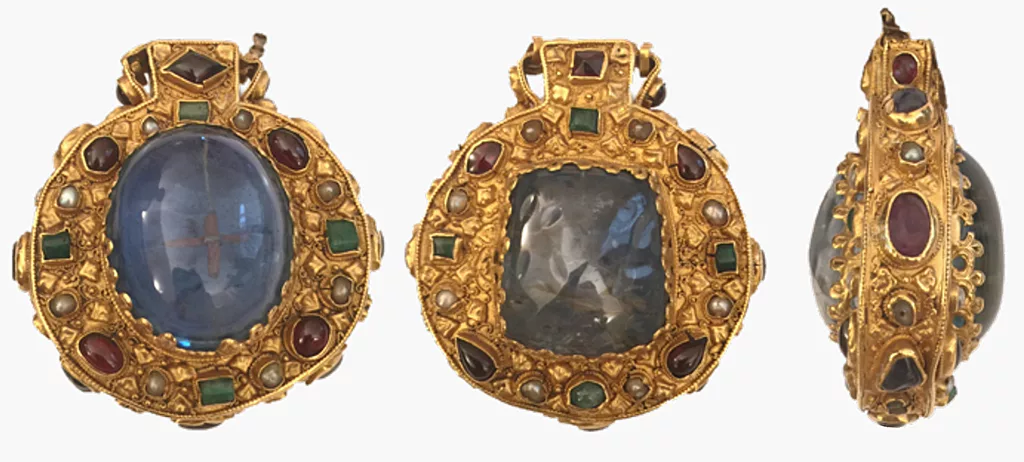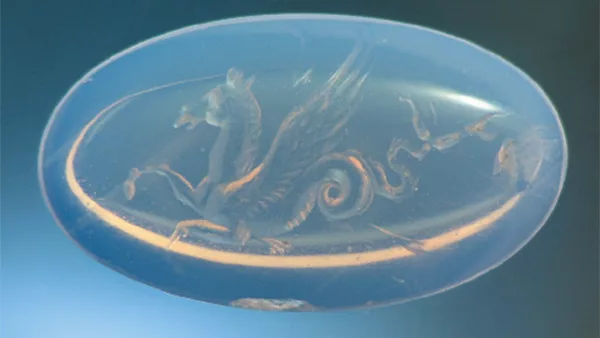
Talisman of Charlemagne
by Dr. M.S. Krzemnicki, first published in Facette 26 (May 2020)

The talisman of Charlemagne, a gem-bearing reliquary of historic provenance and importance closely associated to the history of Europe (Figure 1), was recently investigated by historians and gemmologists including from SSEF in a collaborative research project led by Prof. G. Panczer from the Claude Bernard University of Lyon. This interdisciplinary approach allowed to combine insights from historical science with findings based on the analyses of the gems present on the talisman, and thus resulting in a better understanding of its creation, modifications, and uses through history.
The legend of this jewel follows figures such as Charlemagne, Napoleon I, Empress Josephine, Hortense de Beauharnais, Napoleon III, and Empress Eugénie. At various times it has been said to contain fragments of the hair of the Virgin Mary and a remnant of the True Cross, and is therefore a reliquary, a container in which sacred relics are kept.
Although attributed to the Emperor Charlemagne (748-814 AD) –hence its name, this origin remains doubtful and unproven. In fact, the first depictions of the reliquary did not appear until the seventeenth century. However, its design and workmanship suggests a medieval Carolingian age at least as early as the late ninth century.

The present study was the first scientific gemmological analysis of this item of cultural heritage (Figure 2), carried out on-site at the Palace of Tau Museum in Reims (France) with portable instrumentation. Still, we were able to identify a large blue cobalt-bearing glass cabochon on the front, a large blue-gray sapphire on the back, and an assortment of further coloured stones and pearls. Based on our data and comparison with similar objects of the Carolingian period, we assume that the blue- gray sapphire is of Ceylonese (Sri Lankan) origin. The estimated weight of this center sapphire is approximately 190 ct, making it one of the largest known sapphires as of the early seventeenth century.
Want to learn more about sapphire origins and treatments?


